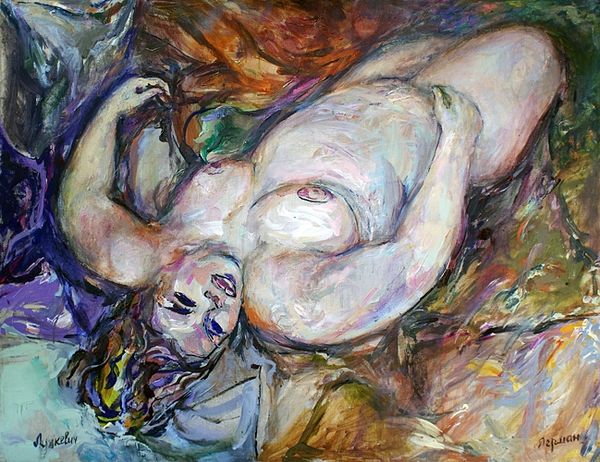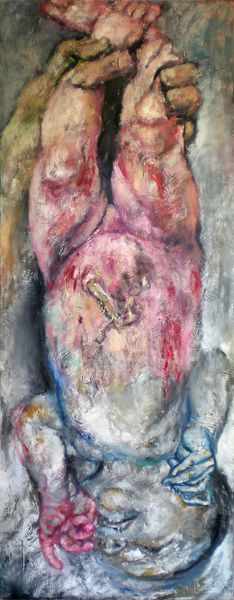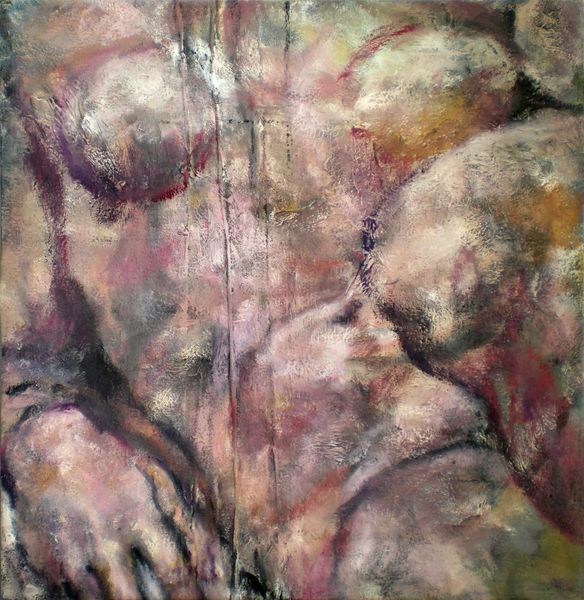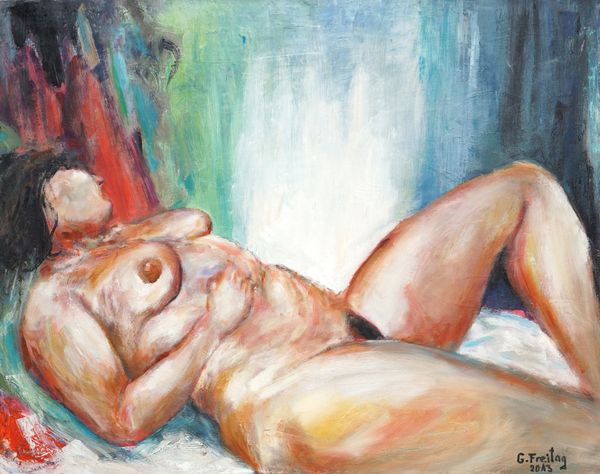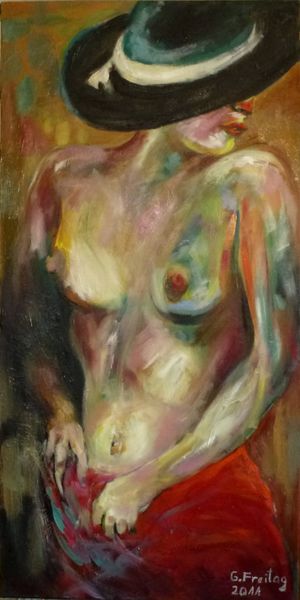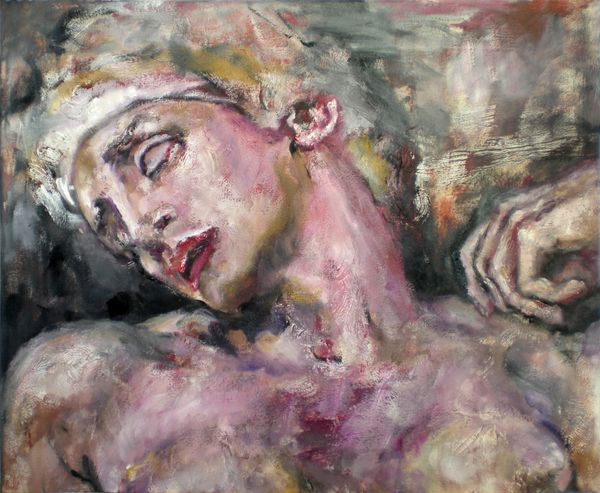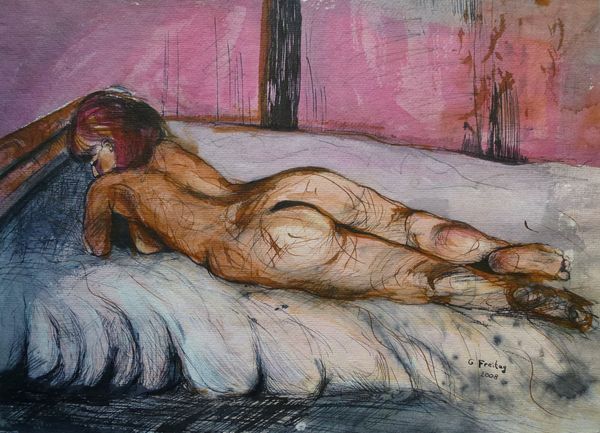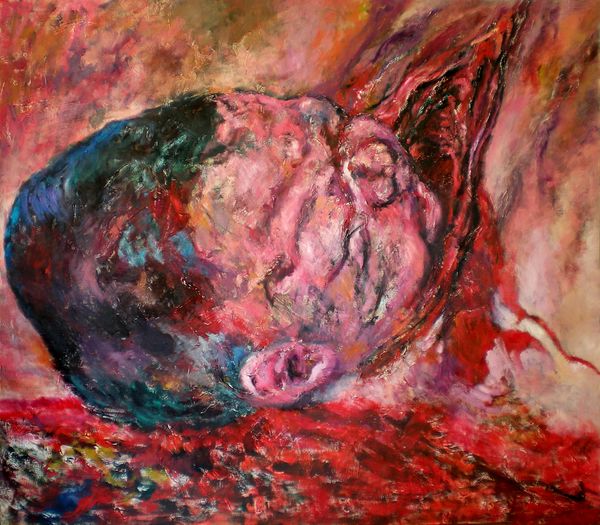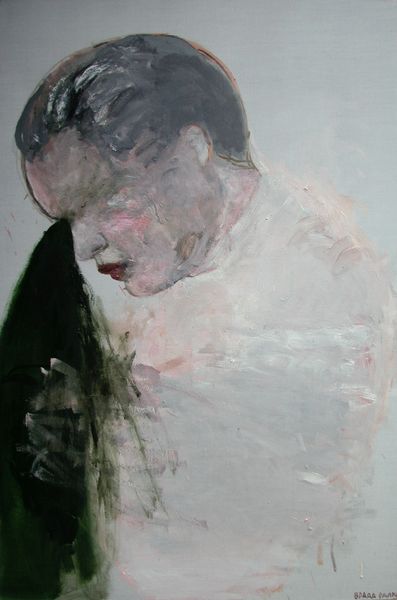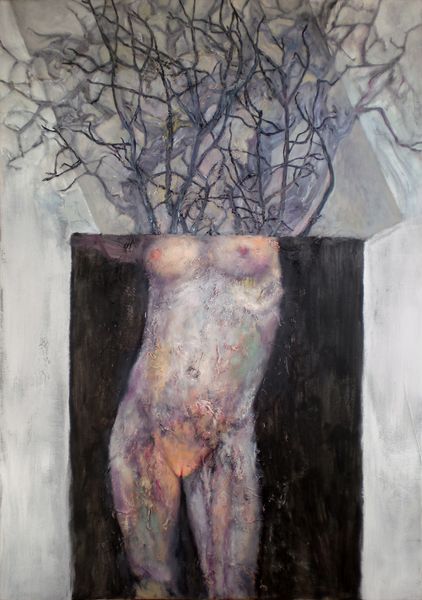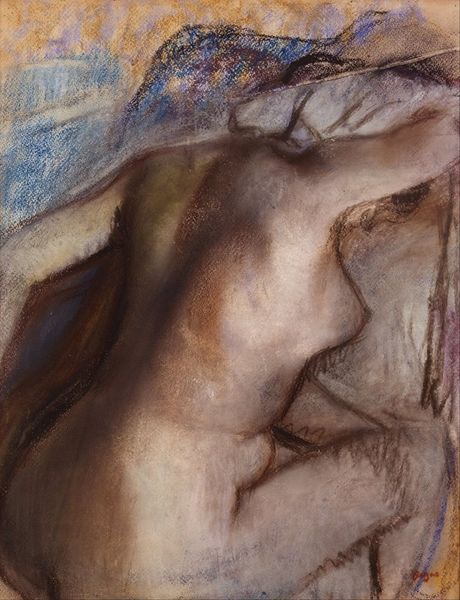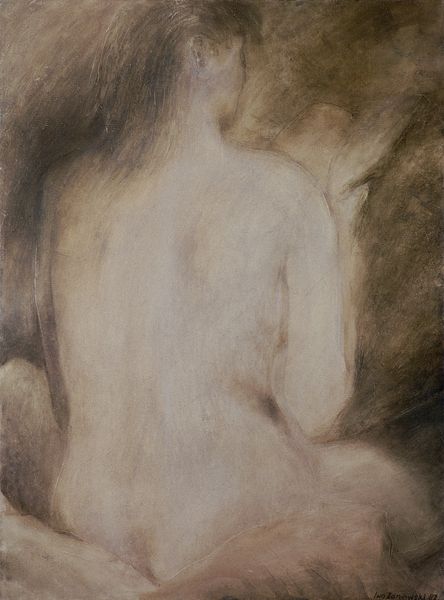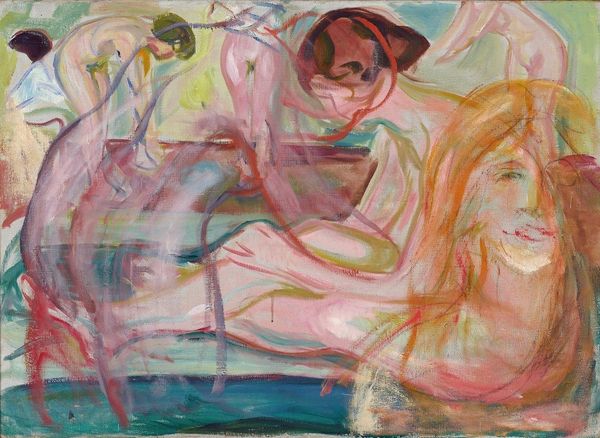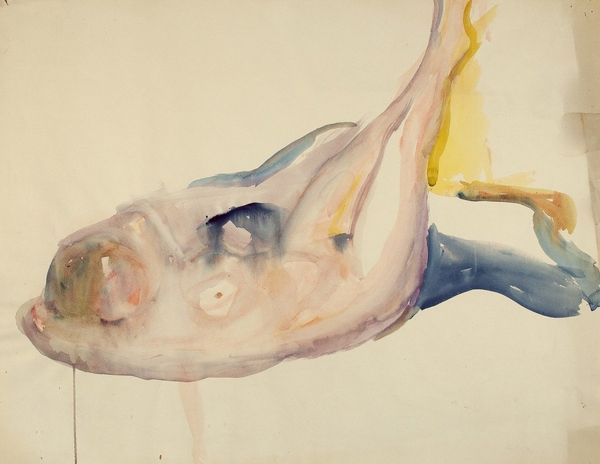
acrylic-paint, impasto
#
abstract expressionism
#
contemporary
#
acrylic-paint
#
figuration
#
oil painting
#
impasto
#
female-nude
#
acrylic on canvas
#
mythology
#
painting painterly
Copyright: Carmen Delaco,Fair Use
Curator: There's an arresting quality to this work by Carmen Delaco, created in 2013. The canvas, worked with acrylic paint and impasto, depicts "Leda." What strikes you immediately? Editor: It feels fragmented, spectral. The palette is muted, almost ghostly, with that single, strong wing as the focal point, and this impressionistic swirl. There’s a real sense of the mythological—as something fading from collective memory. Curator: Exactly. The painting engages with the myth of Leda and the Swan— a cornerstone of Western art for centuries, charged with complex ideas of power, sexuality, and fate. Delaco revisits it in a contemporary context, almost like a deconstruction. Editor: And the figure is unfinished. Missing the head entirely, the hands and feet indistinct, dissolving. It disrupts the heroic portrayal of the subject as, in earlier times, such works often functioned as blatant shows of power. This suggests vulnerability and maybe even trauma. Curator: I see what you mean. The deliberate ambiguity pushes viewers to contemplate not only the mythological story itself but its implications for representations of the female form, the concept of divinity, and violence in art history. Do you see visual or symbolic clues of trauma here? Editor: Yes, look at the palette: pale blues, greys and violets dominate. Notice the impasto technique, creating depth, but also rawness. Then observe the pose – not sensual, but rather like something fallen or discarded, and the gaze of the viewer almost imposed onto this unfinished form. There’s no way of really knowing, but to me it evokes absence, a before or after. Curator: Interesting. Delaco has a distinctive way of presenting canonical stories. Here the viewer gets an embodied sense of an event charged with erotic power, yet distanced and devoid of glamour. A statement perhaps? Editor: It really forces us to reconsider how we tell and visualize these foundational myths. It reveals the potential for painting to expose both the allure and the unsettling echoes within these stories that still influence us today. Curator: It's been eye-opening to explore these nuances within the work's symbolism and execution. It seems there are stories buried within stories here. Editor: I agree; "Leda" speaks quietly, leaving its lingering questions to settle in the silence between the image and ourselves.
Comments
No comments
Be the first to comment and join the conversation on the ultimate creative platform.
